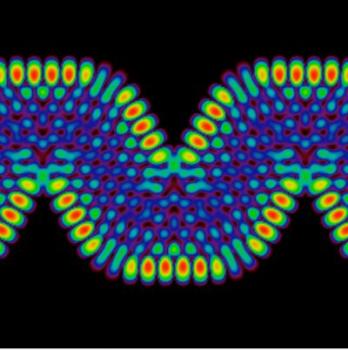A research team led by Vincent Meunier from Rensselaer Polytechnic Institute has discovered the unique properties of graphene nanowiggles, a new type of graphene material, utilizing the capabilities of the Rensselaer Center for Nanotechnology Innovations (CCNI).
 This is an image of a nanowiggle. Credit: Rensselaer Polytechnic Institute.
This is an image of a nanowiggle. Credit: Rensselaer Polytechnic Institute.
According to the research team, nanowiggles are segmented surface structures of graphitic nanoribbons. Each nanowiggle demonstrates diverse conductive and magnetic properties. These findings pave the way to researchers to develop a customized graphene nanostructure for a specific device or task.
Graphene nanowiggles can be easily produced and altered to demonstrate outstanding electrical conductive properties. The research team studied various nanowiggle structures using computational analysis in order to understand the nanomaterial in detail for potential future applications.
Based on the shape of the edges of the nanostructures, they have been classified as zigzag, armchair, zigzag/armchair and armchair/zigzag and were named as nanowiggles. The wiggly form can be found in the edges of all of the nanoribbon structures.
The research team discovered that each nanowiggle has highly different band gaps, which are a measure of a material’s electrical conductivity level. Another surprising result was that different nanowiggles demonstrated up to five vastly different magnetic properties.
According to Meunier, these findings will help researchers to manipulate the magnetic properties and bandgap of a nanowiggle for a specific application. Meunier stated that these groundbreaking results pave way to develop customized nanomaterials for applications such as semiconductors, photovoltaics and especially spintronics.